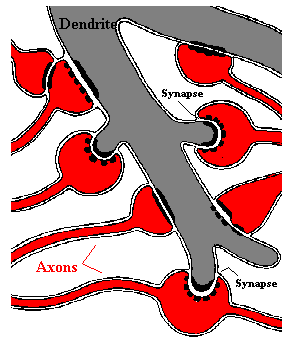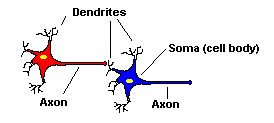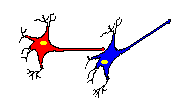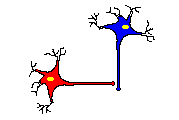Synaptic plasticity
The
synaptic connection![]() is the
key element for the flow of signals and information in brain circuits.
is the
key element for the flow of signals and information in brain circuits.
 Fig.1: Synaptic connections between axons (Credit: Eric H. Chudler - "Neuroscience for kids") |


 Fig. 2: Various types of synapses. (Credit: Eric H. Chudler - "Neuroscience for kids") |
It is, therefore, easy to understand why the neural basis of complex brain activities, like learning and remembering, as well as of individual intellectual ability, are studied starting from the level of the synaptic function. These complex brain functions are explained by the property of synaptic connections to strengthen or weaken their activity in relation to the previous activation state. They can also be eliminated or formed de novo. This property is called synaptic plasticity. The ability of the brain to continuously modify the activity of its circuits, based on previous and ongoing activity, and therefore on experience, was proposed for the first time on a theoretical level by Donald Hebb in 1949 (from whom the term of Hebbian synapse derives, to indicate a synapse that is able to modify its function on the basis of activity).